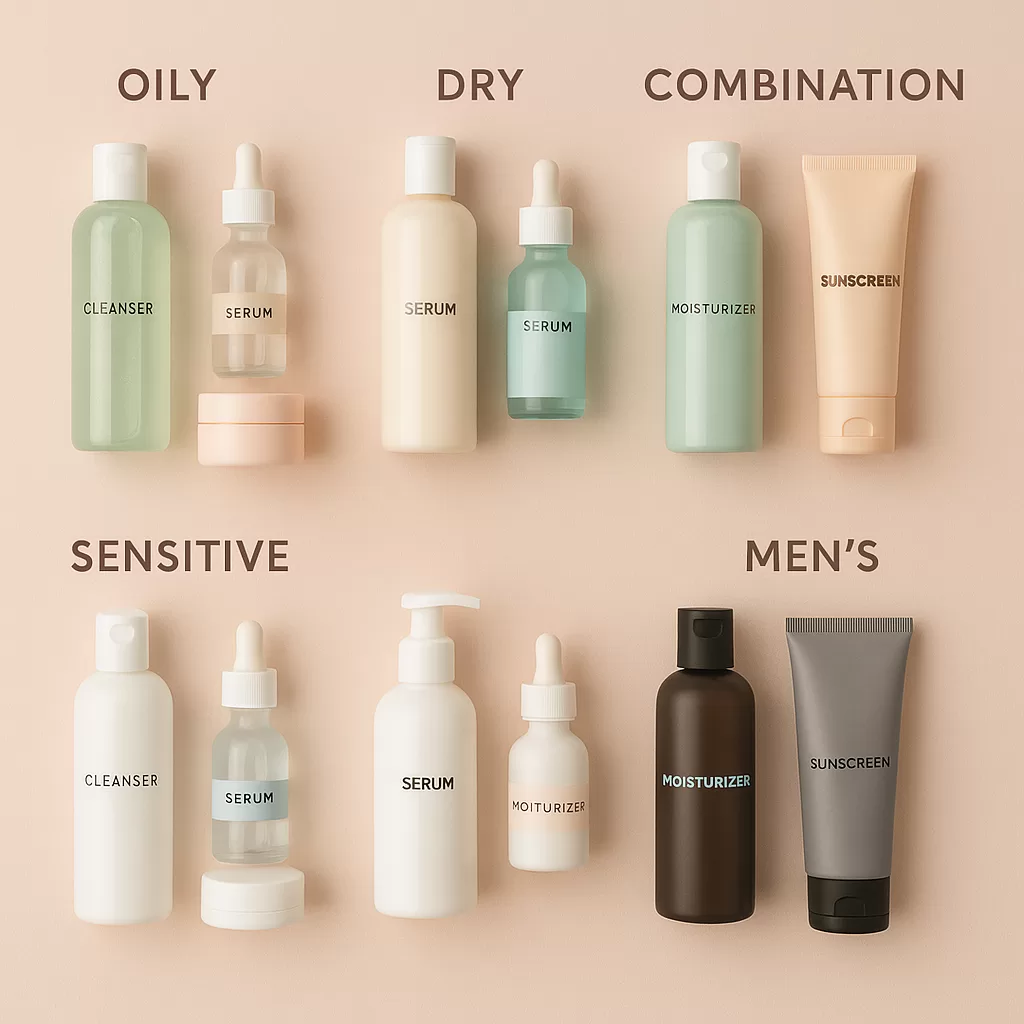Skincare Routine Guide for Every Skin Type
Beautiful skin doesn’t happen by chance, it’s the result of a consistent and well-chosen skincare routine. Your skin type determines what products and practices you should follow. Whether you have oily, dry, sensitive, or combination skin, or if you’re a man navigating skincare for the first time, this skincare routine guide breaks it all down, step by step. Let’s help you build a routine that delivers results and supports your skin’s natural balance.
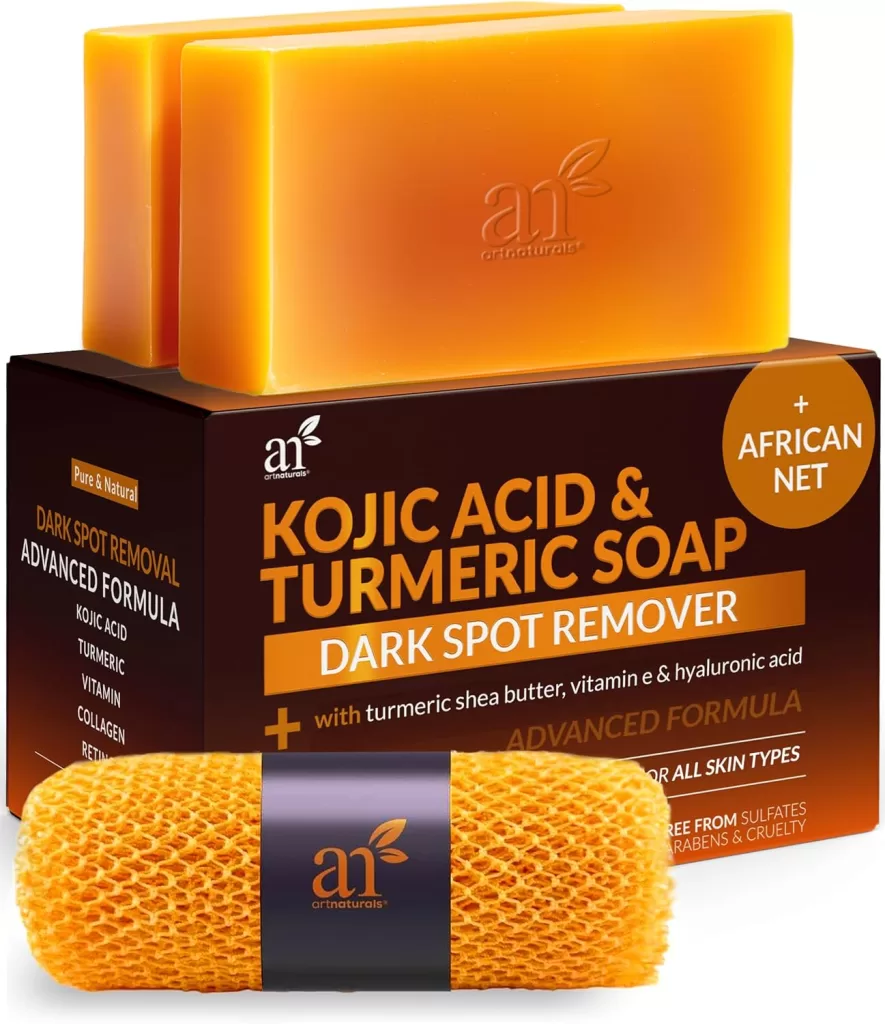
Kojic Acid Soap + African Net Sponge (2 pack X 142g Turmeric bars) Dark spot remover, Hyperpigmentation & Scars – Original Japanese Complex Vitamin C
how to use it?
Step 1
cleanse your face and apply a few drops of ail to ensure a smooth glide during the qua sha treatment.
Step 2
gently scrape along your facial contours in upward and outward motions for about 5-10 minutes
Understanding Your Skin’s Unique Needs
Your skin is your body’s largest organ and serves as the first line of defense against environmental stressors. It’s constantly working to protect you from UV radiation, pollution, bacteria, and temperature changes. This hard work means your skin deserves dedicated care and attention. The condition of your skin can be influenced by genetics, hormones, diet, stress levels, sleep quality, and even the climate you live in.
Modern life presents unique challenges for skin health. Air pollution in urban environments can clog pores and accelerate aging. Blue light from screens may contribute to hyperpigmentation and collagen breakdown. Stress hormones like cortisol can trigger inflammation and breakouts. Understanding these factors helps you make informed decisions about your skincare routine and lifestyle choices that support healthy skin.
Disaar Skincare Vitamin C Facial Wash
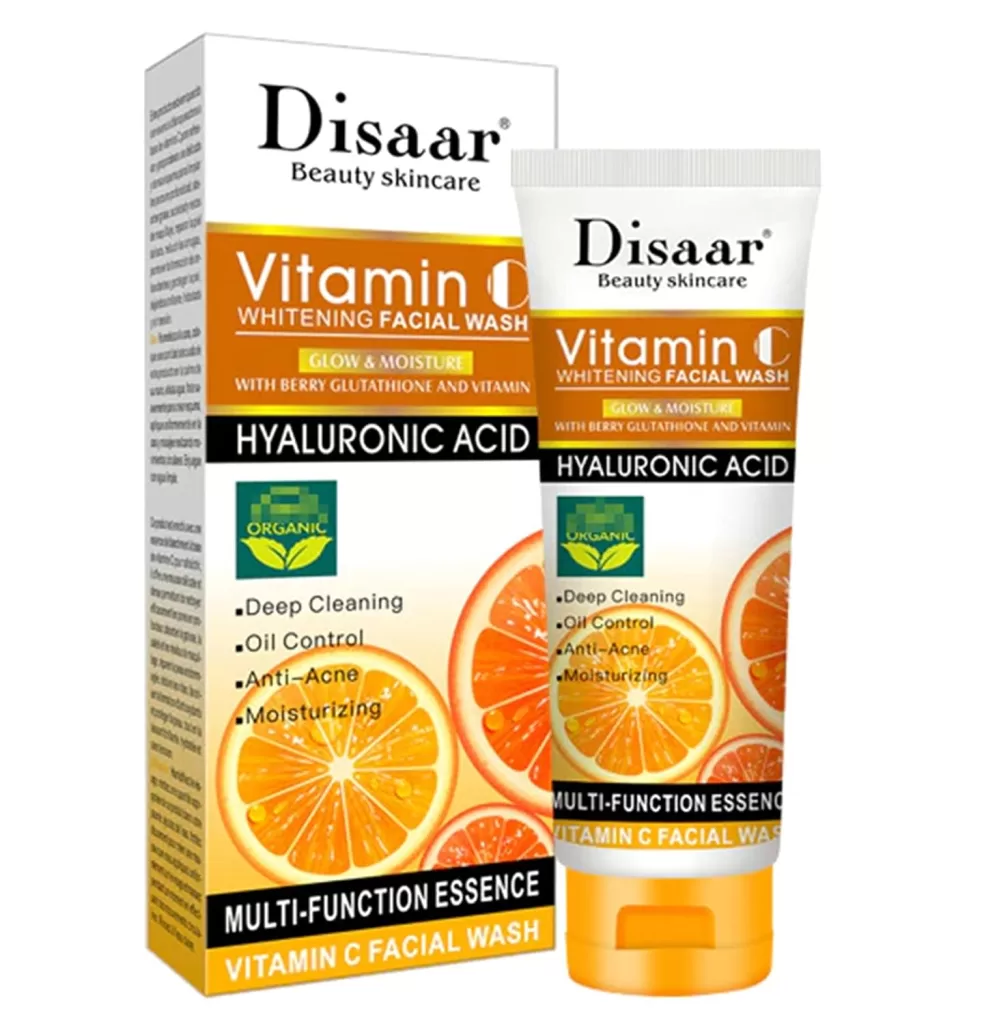
DISAAR Beauty Skincare Vitamin C Facial Wash Foam Hyaluronic Acid Berry Glutathione Moisturizing Cleaning Anti-Acne Oil Control Essence 100ml
The Science Behind Different Skin Types
Skin type is primarily determined by how much oil (sebum) your sebaceous glands produce. These glands are most concentrated on your face, particularly in the T-zone area (forehead, nose, and chin). Genetics largely determine your baseline oil production, but factors like age, hormones, weather, and product use can influence it. As we age, oil production typically decreases, which is why many people notice their skin becoming drier over time.
The skin’s barrier function is crucial for maintaining healthy skin regardless of type. This barrier consists of dead skin cells held together by lipids (fats) that prevent water loss and keep irritants out. When this barrier is compromised, skin becomes sensitive, dehydrated, and prone to problems. This is why harsh scrubbing or over-cleansing can make skin issues worse, even for oily skin types.
Your Essential Skincare Routine Guide: Discover Collagen Snail Extract Sunscreen SPF 50+ PA++++

Elevate your daily regimen with our comprehensive Skincare Routine Guide, beginning each morning by cleansing thoroughly to prepare your skin. Next, apply your favorite serums and treatments, allowing them to fully absorb. Conclude your morning routine with a generous application of Collagen Snail Extract Sunscreen SPF 50+ PA++++, ensuring broad-spectrum protection while nourishing your skin with collagen and snail extract for a radiant, protected complexion throughout the day. Sources
Skincare Routine for Oily Skin
Oily skin often deals with excess shine, clogged pores, and occasional breakouts. The key is balancing oil production without stripping the skin. Use lightweight, non-comedogenic products and include gentle exfoliation to clear pores.
Understanding Oily Skin Challenges
Oily skin can be frustrating, but it does have advantages. The extra oil production helps protect against environmental damage and can keep skin looking younger longer. However, excess oil can mix with dead skin cells and bacteria to form blackheads, whiteheads, and inflammatory acne. Many people with oily skin make the mistake of over-cleansing or using harsh products, which can actually trigger more oil production as the skin tries to compensate.
Hormonal fluctuations significantly impact oily skin. During puberty, menstruation, pregnancy, or times of stress, increased androgen levels can ramp up oil production. This is why breakouts often occur before menstrual cycles or during stressful periods. Understanding these patterns can help you adjust your routine accordingly and be more patient with your skin during these times.
🧴 Ideal Steps:
- Gel-based cleanser (AM/PM)
- Oil-free toner (optional)
- Niacinamide serum (AM)
- Lightweight moisturizer
- Mineral sunscreen (AM)
- Clay mask (1–2 times/week)
Advanced Tips for Oily Skin Management
Consider incorporating salicylic acid (BHA) into your routine 2-3 times per week. This oil-soluble acid can penetrate into pores to dissolve buildup and prevent blackheads. Start slowly to avoid irritation, and always follow with moisturizer. Oil cleansing, though counterintuitive, can actually help balance oily skin by dissolving excess sebum without stripping the skin.
Diet can also influence oily skin. Some studies suggest that high-glycemic foods (sugary, processed foods) and dairy products may worsen acne in some individuals. While the connection isn’t universal, keeping a food diary can help you identify potential triggers. Staying hydrated and eating foods rich in omega-3 fatty acids, zinc, and antioxidants may support healthier skin.
🛍️ Products for Oily Skin (Available on Amazon)
| Product | Description | Purchase Here |
|---|---|---|
| CeraVe Foaming Cleanser | Removes excess oil without disrupting barrier | Buy on Amazon |
| The Ordinary Niacinamide 10% | Reduces oiliness and breakouts | Buy on Amazon |
| Innisfree Super Volcanic Clay Mask | Deep-cleansing clay for pore care | Buy on Amazon |
Disaar Vitamin C Organic Orange Extract Skin Care Set

DISAAR BEAUTY Vitamin C Organic Orange Extract Skin Care Set Facial Wash Toner Serum Face Cream Moisturizing Reduce Wrinkles Hydrate 30ml+30ml+10ml+15g 4PCS
Skincare Routine for Dry Skin
Dry skin feels tight, flaky, or rough. It often lacks hydration and lipids, making it prone to irritation. Focus on replenishing moisture with hydrating and emollient-rich products.
The Complexity of Dry Skin
Dry skin can be either naturally occurring or acquired due to environmental factors, age, or product use. Naturally dry skin produces less oil and has a compromised barrier function from birth. Acquired dry skin might result from over-exfoliation, harsh weather, low humidity, hot showers, or using products with drying ingredients like alcohol or sulfates.
There’s an important distinction between dry skin and dehydrated skin. Dry skin lacks oil (lipids), while dehydrated skin lacks water. You can have oily but dehydrated skin, which feels tight despite being shiny. Dehydrated skin needs water-based products like hyaluronic acid, while dry skin needs oil-based products like ceramides and fatty acids. Many people have both conditions simultaneously.
🧴 Ideal Steps:
- Cream-based cleanser
- Hydrating toner/essence
- Hyaluronic acid serum
- Ceramide moisturizer
- Facial oil (optional)
- SPF (AM)
Seasonal Considerations for Dry Skin
Dry skin often worsens in winter due to low humidity and indoor heating. Consider using a humidifier in your bedroom and switching to richer products during colder months. In summer, air conditioning can also be drying, so don’t abandon your moisturizing routine completely. Layer lighter hydrating products instead of skipping moisturizer altogether.
The order of application matters significantly for dry skin. Apply products from thinnest to thickest consistency, and don’t let your skin completely dry between steps. Apply the next product while your skin is still slightly damp to help lock in hydration. This technique, called “wet skin moisturizing,” can significantly improve product absorption and effectiveness.
🛍️ Products for Dry Skin (Available on Amazon)
| Product | Description | Purchase Here |
|---|---|---|
| La Roche-Posay Toleriane Hydrating Cleanser | Gentle and hydrating for dry skin | Buy on Amazon |
| COSRX Advanced Snail Essence | Boosts hydration and elasticity | Buy on Amazon |
| CeraVe Moisturizing Cream | Ceramide-rich for barrier repair | Buy on Amazon |
Disaar Face Serum Argan Oil Of Marocco Repair Moisturizing Blemish Anti Wrinkles Facial Skin Care

Face Serum Argan Oil Of Marocco Repair Moisturizing Blemish Anti Wrinkles Facial Skin Care Renwing+ Super Formula 80g
Skincare Routine for Sensitive Skin
Sensitive skin reacts easily to products, temperature, or stress. The goal is to soothe and protect with a minimalist routine and gentle ingredients.
Identifying Triggers and Sensitivities
Sensitive skin can manifest as redness, burning, stinging, itching, or breakouts when exposed to certain ingredients or environmental factors. Common triggers include fragrances, essential oils, alcohol, sulfates, preservatives, and active ingredients like retinoids or acids. Weather changes, stress, hormonal fluctuations, and even dietary factors can also trigger sensitivity.
It’s important to distinguish between sensitive skin and skin conditions like rosacea, eczema, or contact dermatitis. If you experience persistent or severe reactions, consult a dermatologist for proper diagnosis and treatment. Sometimes what appears to be sensitive skin is actually a specific condition that requires targeted therapy.
🧴 Ideal Steps:
- Fragrance-free gentle cleanser
- Calming toner (alcohol-free)
- Aloe vera or centella serum
- Lightweight moisturizer
- Mineral sunscreen (AM)
Building Tolerance and Maintaining Balance
For sensitive skin, less is often more. Start with a basic routine and introduce new products one at a time, waiting at least a week between additions. This helps you identify which products your skin tolerates well. Keep a skincare diary to track products used and any reactions experienced.
When you do want to try active ingredients, start with the gentlest formulations and lowest concentrations. For example, begin with 0.25% retinol instead of 1%, or use lactic acid instead of glycolic acid. Apply actives every third night initially, gradually increasing frequency as your skin builds tolerance.
🛍️ Products for Sensitive Skin (Available on Amazon)
| Product | Description | Purchase Here |
|---|---|---|
| Vanicream Gentle Cleanser | Free from dyes, fragrance, and parabens | Buy on Amazon |
| Etude House SoonJung Toner | pH-balanced and soothing | Buy on Amazon |
| La Roche-Posay Mineral Sunscreen | Physical SPF with minimal irritation | Buy on Amazon |
Vitamin C Essence Soap Moisturizing Hyaluronic Acid Deep Cleansing Oil Control Anti-Freckle
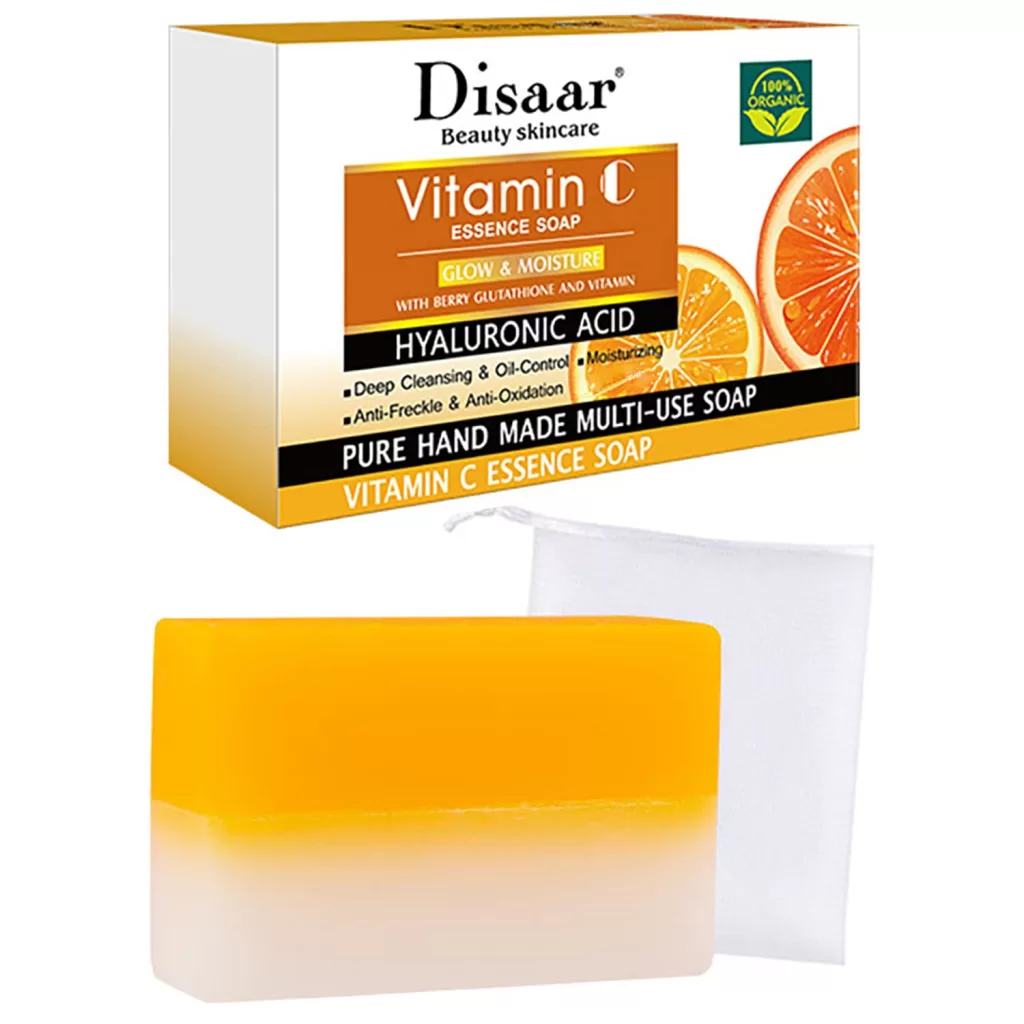
DISAAR Beauty Vitamin C Essence Soap Moisturizing Hyaluronic Acid Deep Cleansing Oil Control Anti-Freckle 100g/3.5fl.oz
Skincare Routine for Combination Skin
Combination skin has both oily and dry areas, often an oily T-zone and dry cheeks. The best strategy is targeted care—balance hydration without overloading or drying out any zone.
Mastering the Art of Zone Treatment
Combination skin requires a strategic approach since different areas of your face have different needs. The T-zone (forehead, nose, chin) typically produces more oil due to a higher concentration of sebaceous glands, while the cheeks and eye area tend to be drier. This can make product selection challenging, as what works for your T-zone might be too heavy for oily areas or too light for dry areas.
Consider using different products on different areas of your face. You might use a gel cleanser overall but follow with a lightweight moisturizer on your T-zone and a richer cream on your cheeks. Alternatively, you can use the same base products but add targeted treatments—like a clay mask only on your T-zone or a hydrating serum only on dry areas.
🧴 Ideal Steps:
- Gel or milk cleanser
- Hydrating toner
- Niacinamide or squalane serum
- Lightweight cream or gel moisturizer
- SPF (AM)
- Spot treatment as needed
Adapting Your Routine Throughout the Day
Combination skin can change throughout the day and seasonally. You might wake up with balanced skin but develop an oily T-zone by afternoon. Blotting papers can help manage midday oiliness without disturbing your makeup or skincare. In winter, you might need richer products on your cheeks, while summer might require lighter formulations overall.
Pay attention to how your skin responds to different weather conditions, stress levels, and hormonal changes. Keep a lightweight moisturizer or facial mist handy for touch-ups on dry areas, and oil-absorbing products for managing breakthrough shine in your T-zone.
🛍️ Products for Combination Skin (Available on Amazon)
| Product | Description | Purchase Here |
|---|---|---|
| Neutrogena Hydro Boost Gel | Lightweight but deeply hydrating | Buy on Amazon |
| Paula’s Choice BHA Liquid Exfoliant | Controls oil in T-zone | Buy on Amazon |
| The Ordinary Squalane | Hydrates dry zones without oiliness | Buy on Amazon |
DISAAR BEAUTY Dead Sea Mud Mask for Face and Body

DISAAR BEAUTY Dead Sea Mud Mask for Face and Body Deep Pore Cleansing, Acne Treatment, Anti Aging and Anti Wrinkle, Organic Natural Facial Mask for Smoother
Men’s Skincare Routine
Many men deal with shaving irritation, oily skin, and larger pores. Men’s skincare should be simple, effective, and tailored to their needs. A good routine helps prevent razor bumps, dryness, and aging.
Understanding Men’s Unique Skin Characteristics
Men’s skin has several distinct characteristics that affect skincare needs. Testosterone causes men’s skin to be approximately 25% thicker than women’s skin and produce more oil. This can be advantageous for anti-aging, as thicker skin shows signs of aging later, but it also means men are more prone to clogged pores and acne well into adulthood.
Men’s facial hair creates unique challenges. Daily shaving can cause irritation, ingrown hairs, and micro-cuts that make skin more sensitive. The constant friction can lead to hyperpigmentation and uneven texture. Additionally, men often have larger, more visible pores due to higher oil production and the regular trauma of shaving.
🧴 Ideal Steps:
- Gel-based cleanser
- Aftershave balm or witch hazel
- Lightweight moisturizer
- SPF (AM)
- Optional: retinol (PM), charcoal mask (weekly)
Shaving Techniques and Post-Shave Care
Proper shaving technique is crucial for healthy skin. Always shave after a warm shower when hair is soft, use a sharp blade, and shave in the direction of hair growth to minimize irritation. Pre-shave oils can provide extra protection for sensitive skin. Electric razors might be better for those prone to razor bumps, though they may not provide as close a shave.
Post-shave care is essential. Avoid aftershaves with high alcohol content, which can be drying and irritating. Instead, opt for alcohol-free balms or gels with soothing ingredients like aloe vera or chamomile. If you experience frequent ingrown hairs, consider incorporating a gentle exfoliant with salicylic acid into your routine 2-3 times per week.
Breaking Down Skincare Stigma
Many men feel intimidated by skincare or worry it’s not masculine. However, taking care of your skin is simply good hygiene and health maintenance, like brushing your teeth or exercising. Start simple—cleanser, moisturizer, and sunscreen can make a significant difference in skin health and appearance.
The skincare market has responded to men’s needs with products specifically formulated for male skin characteristics. However, many unisex or women’s products work excellently for men too. Focus on your skin type and concerns rather than gendered marketing when choosing products.
🛍️ Products for Men’s Skincare (Available on Amazon)
| Product | Description | Purchase Here |
|---|---|---|
| Lumin Men’s Face Wash | Removes oil and dirt without stripping | Buy on Amazon |
| Bulldog Aftershave Balm | Calms post-shave skin | Buy on Amazon |
| Neutrogena Men’s Moisturizer with SPF | 2-in-1 hydration and sun protection | Buy on Amazon |
DISAAR Beauty Snail Soap Deep Cleaning Spots Moisturizing
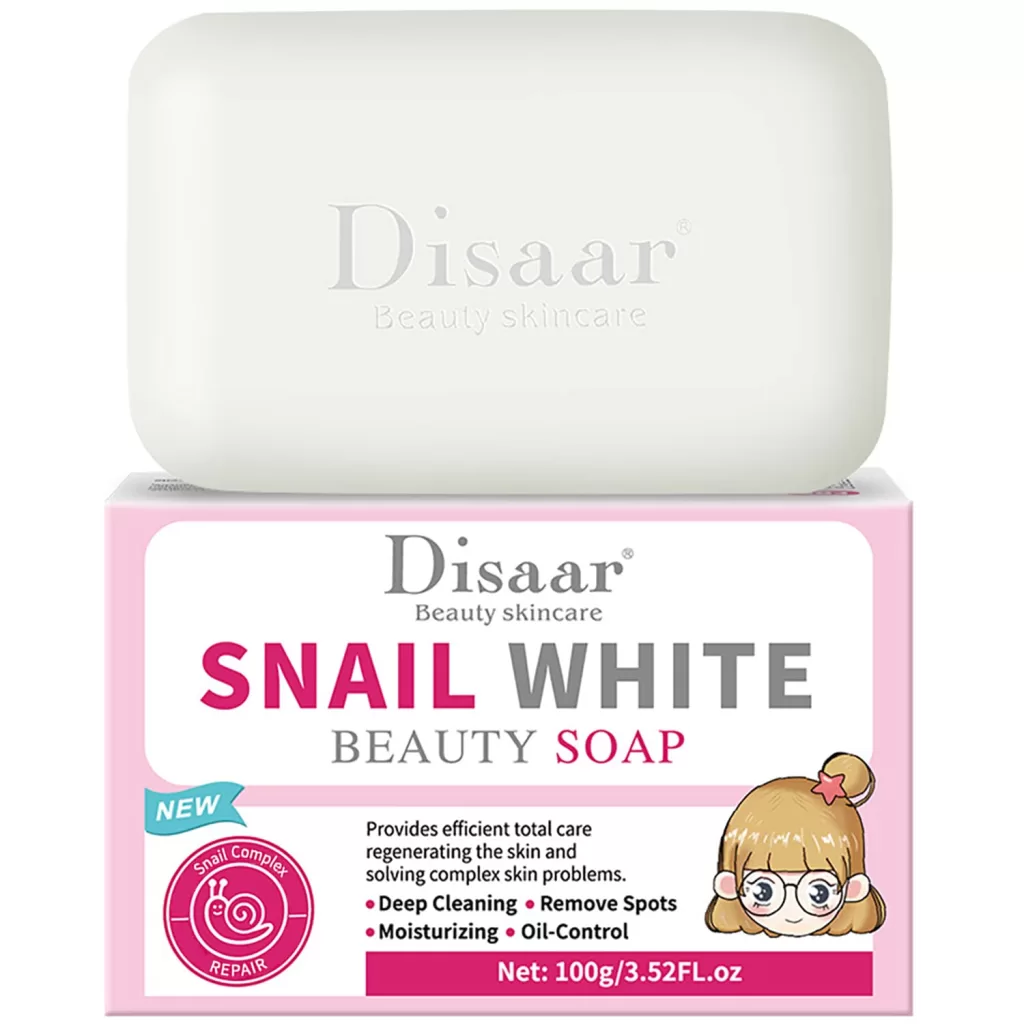
DISAAR Beauty Snail Soap Deep Cleaning Remove Spots Moisturizing Oil-Control Cleanses Pores Repair Skin 100g/3.52fl.oz
How to Know Your Skin Type
If you’re unsure of your skin type, try the bare-face test: wash your face and wait 30 minutes. And If it feels tight, it’s likely dry; if it’s shiny all over, oily. If just your T-zone is shiny, it’s combination. If there’s no tightness or shine, you likely have normal skin.
Advanced Skin Analysis Techniques
Beyond the basic bare-face test, pay attention to how your skin behaves throughout the day and in different seasons. Notice how your skin feels when you wake up—is it tight, comfortable, or oily? How does it respond to different products? Does it get irritated easily, or can it handle active ingredients well?
Consider keeping a skin diary for a few weeks, noting daily observations about oiliness, dryness, sensitivity, and breakouts. Also note external factors like weather, stress levels, diet changes, and product use. This can help you identify patterns and better understand your skin’s needs.
Your skin type can also change over time due to age, hormones, climate, or lifestyle changes. What worked in your twenties might not work in your forties. Pregnancy, menopause, medication changes, and even seasonal variations can affect your skin type, so be prepared to adjust your routine accordingly.
Universal Skincare Tips
- Always wear SPF—even on cloudy days
- Patch-test new products before full use
- Introduce actives slowly (like acids and retinoids)
- Hydration helps every skin type
- Avoid over-washing, which can trigger breakouts or dryness
The Importance of Consistency and Patience
Skincare results take time. Most products need 4-6 weeks of consistent use before you’ll see significant changes, and some ingredients like retinoids can take 3-4 months to show full benefits. This is because skin cells take about 28 days to turn over, and you need several cycles to see real improvement.
Consistency is more important than having the most expensive or trendy products. A simple routine used daily will outperform an elaborate routine used sporadically. If you’re traveling or pressed for time, maintain at least the basics: cleanser, moisturizer, and sunscreen.
Environmental Factors and Lifestyle Considerations
Your environment significantly impacts your skin. Air pollution, UV radiation, air conditioning, and heating can all affect skin health. In polluted cities, consider double cleansing to remove environmental buildup. In dry climates or during winter, increase hydration and consider using a humidifier.
Sleep quality affects skin repair and regeneration. During deep sleep, your body produces growth hormone, which helps repair damaged skin cells. Aim for 7-9 hours of quality sleep and consider using a silk pillowcase to reduce friction on your skin and hair.
The Role of Diet and Hydration
While skincare products work from the outside in, your diet works from the inside out. Foods rich in antioxidants (berries, leafy greens, nuts), omega-3 fatty acids (fatty fish, walnuts), and vitamins A, C, and E can support skin health. Conversely, high-glycemic foods and excessive dairy might worsen acne in some people.
Hydration is crucial for all skin types. Even oily skin can be dehydrated. Aim for 8 glasses of water daily and eat water-rich foods like cucumbers, watermelon, and oranges. However, remember that topical hydration (through skincare products) is just as important as internal hydration.
Skincare Routine Guide for Every Skin Type
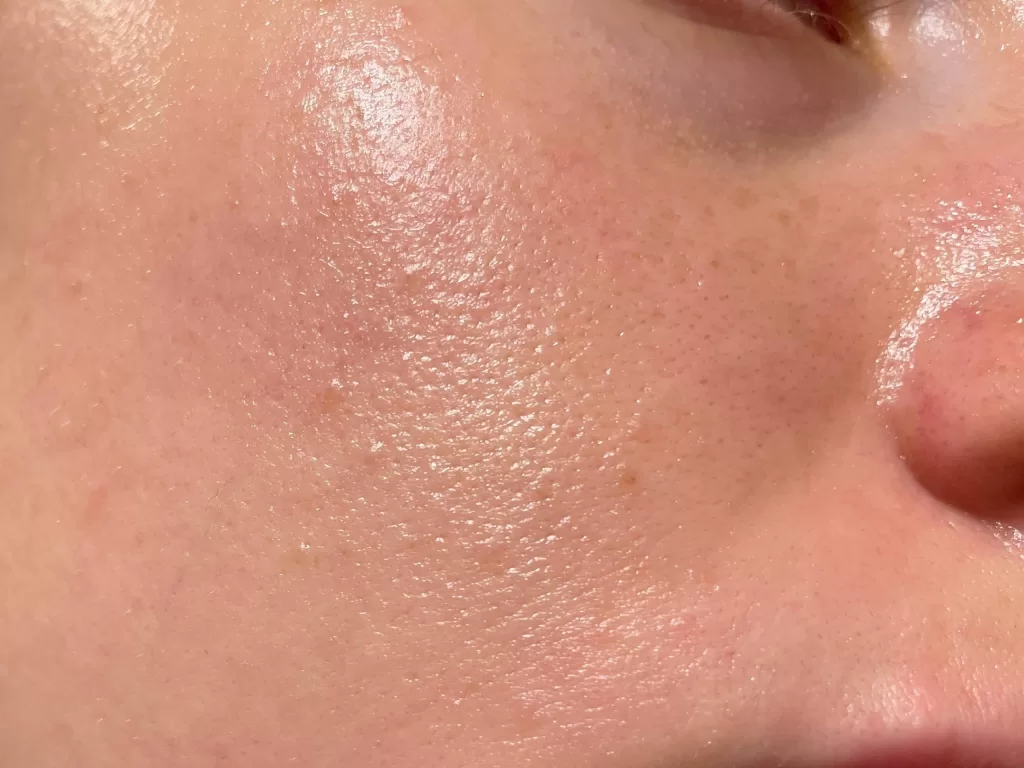
Understanding Oily Skin: Causes and C
Advanced Skincare Strategies
Incorporating Active Ingredients
Active ingredients like retinoids, alpha-hydroxy acids (AHAs), beta-hydroxy acids (BHAs), and vitamin C can significantly improve skin texture, tone, and appearance. However, they require careful introduction and use. Start with one active ingredient at a time, use the lowest effective concentration, and gradually increase frequency.
Retinoids are considered the gold standard for anti-aging and acne treatment. They increase cell turnover, stimulate collagen production, and can improve texture and tone. However, they can cause initial irritation, dryness, and increased sun sensitivity. Start with over-the-counter retinol before considering prescription retinoids.
Understanding Product Interactions
Some ingredients work synergistically, while others can cause irritation or reduce effectiveness when combined. Vitamin C works well with vitamin E and sunscreen but can be unstable when mixed with retinoids or AHAs/BHAs. Niacinamide pairs well with almost everything and can help buffer more irritating ingredients.
When using multiple active ingredients, consider alternating them on different days or using them at different times (vitamin C in the morning, retinoids at night). Always introduce new actives slowly and listen to your skin’s response.

FAQs – Skincare Routine Guide
What is the Best Skincare Routine Guide for Beginners?
Start with a simple 3-step process: cleanser, moisturizer, and sunscreen in the morning. Add a serum or exfoliant once you understand your skin’s needs.
Can Men Use Women’s Skincare Routine Guide Products?
Yes, skincare is about skin type—not gender. Many unisex or gentle products are ideal for men too.
Is It Bad to Skip Moisturizer in Your Skincare Routine Guide If You Have Oily Skin?
No! In fact, skipping moisturizer can make your skin produce even more oil. Choose a gel-based, oil-free formula.
How Often Should You Exfoliate in Your Daily Skincare Routine Guide?
1–2 times per week for most skin types. Sensitive or dry skin should exfoliate less frequently.
When Should You Start Using Anti-Aging Products in Your Skincare Routine Guide?
Prevention is easier than correction. You can start using antioxidants like vitamin C in your twenties and introduce retinoids in your late twenties or early thirties. However, sunscreen is the most important anti-aging product and should be used daily regardless of age.
How Do You Know If a Product is Working in Your Skincare Routine Guide?
Give products 4-6 weeks of consistent use before evaluating effectiveness. Take photos in consistent lighting to track changes, as gradual improvements can be hard to notice day-to-day. Keep notes about how your skin feels and any changes in texture, tone, or breakout frequency.
Should You Change Your Skincare Routine Guide Seasonally?
Many people benefit from seasonal adjustments. You might need richer moisturizers and gentler cleansers in winter, and lighter, more frequent cleansing in summer. Pay attention to how your skin responds to weather changes and adjust accordingly.
Conclusion: Skincare Routine Guide
Your skin is unique, and your skincare routine should reflect that. Whether you’re managing acne-prone oily skin or caring for post-shave sensitive skin, the right products and practices make all the difference. Use this skincare routine guide to build a consistent and effective regimen that supports long-term skin health.
Remember that great skin is a journey, not a destination. Be patient with your skin, consistent with your routine, and don’t be afraid to adjust your approach as your skin’s needs change over time. The investment you make in your skin today will pay dividends in the years to come, not just in appearance but in overall skin health and confidence.
Most importantly, skincare should be a form of self-care that you enjoy, not a chore. Find products you love using, create a routine that fits your lifestyle, and celebrate the small improvements along the way. Your skin—and your future self—will thank you for the care and attention you provide today.
Skincare Routine Guide: Best Sea Kelp Facial Mask for Oily Skin Relief & Radiance
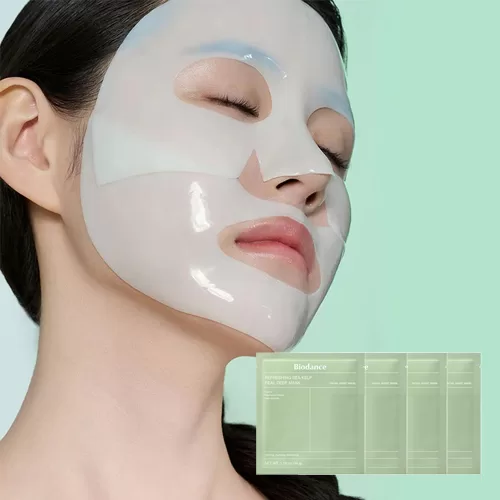
Best Sea Kelp Facial Mask for Oily Skin Relief & Radiance
✨ Discover Where Beauty Meets Clarity ✨
Welcome to Where & How Resources—your trusted guide through the world of skincare, beauty, and everyday wellness. Whether you’re searching for the best serums, budget skincare tips, or expert insights on real routines for real skin, we break it all down with clarity and care. From decoding ingredient lists to comparing top-rated products on Amazon, we make beauty simple, smart, and empowering.
Where questions find answers. Where confidence begins.
👉 Explore now at whereandhowresources.com and take your beauty journey to the next level.

